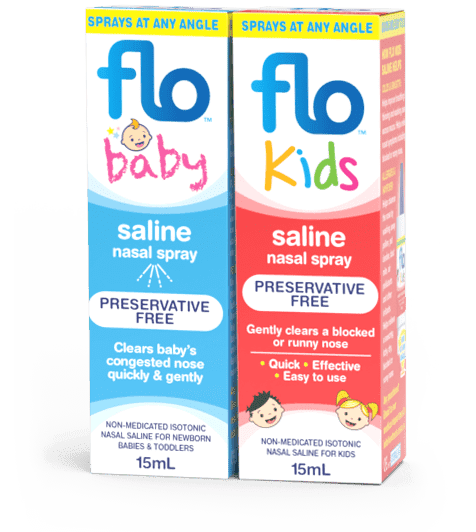Congestion in kids can be a real problem for parents. What can help?
Every parent knows that managing nasal congestion in a child can be tricky. Whether the problem was caused from a cold, flu or allergy, the result is often the same – miserable kids during the day and restless ones at night. For some parents, nasal congestion is an all too common occurrence and one that deserves further inspection. So let’s take a look at some blocked nose basics.
Catching a cold, flu or constant exposure to allergens and irritants can all cause nasal congestion. In children, it often stems from their immune systems reacting to triggers such as bacteria, viruses or foreign bodies like pollen or dust. When these unwanted invaders come into contact with immune defences, it can cause an inflammatory response, a symptom of which is increased production of mucus in the nasal and sinus cavities. While it’s a completely normal response (mucus is designed to catch nasties before they enter the body), it can lead to swelling of nasal and sinus tissue. Alongside mucus build up, this contributes to the sensation of a blocked nose1.
If your child is experiencing nasal congestion, there are ways you can help. First, If your child has a cold or flu, mucus production can be a dehydrating symptom2, so make sure to keep your child’s fluids up. Hydration also helps thin mucus, allowing it to exit the nasal cavities faster3. Raising the child’s head while they sleep can help reduce nasal congestion. You can achieve this by slightly elevating the head of their bed or using extra pillows. Finally, encourage rest as this aids in the body’s natural healing processes3. If you think your child’s congestion is caused by allergens or irritants, maintain a clean environment in the home. This means keep an eye out for dust and dander build up. When you’re outside, just be a bit more conscious of seasonal or environmental factors you know will trigger a response in your child such as pollen.
It’s also a good idea to use a saline nasal spray or drops.
We recommend a formula from the FLO Baby and Kids range because it’ll provide a gentle yet effective way to help relieve congestion in infants and children year-round – cold, flu, allergy or otherwise. The other good thing about FLO formulas are that they’re specifically designed for young users, being Isotonic (which means they won’t sting delicate nasal tissue), preservative-free (some preservatives may contribute to nasal tissue swelling and slowing of nasal mucus clearance4,5) and working by naturally thinning and washing away excess mucus, allergens or irritants, helping relieve a dry, blocked or runny nose. If you’re dreading the thought of getting a wee one to sit still long enough for FLO to be applied, don’t panic! FLO’s spray formulas can be sprayed at any angle. Perfect for little wrigglers needing a good night’s sleep!
For more on how to help your child breathe free with FLO, click here.
1 Nasal Congestion. Cleveland Clinic. Accessed 22 Mar 2024.
2 Why You Shouldn’t Skimp on Liquids When You Have a Cold. American River. Accessed 22 Mar 2024.
3 Home Remedies: Steps to help relieve sinusitis. Mayo Clinic. Accessed 22 Mar 2024.
4 M. Daignault. USA Today. Waking up with a stuffy nose? Why does this happen? And simple hacks to prevent it. Accessed 22 Mar 2024
5 Home Remedies: Steps to help relieve sinusitis. Mayo Clinic. Accessed 22 Mar 2024.
TAPS NP21631 SEP24
